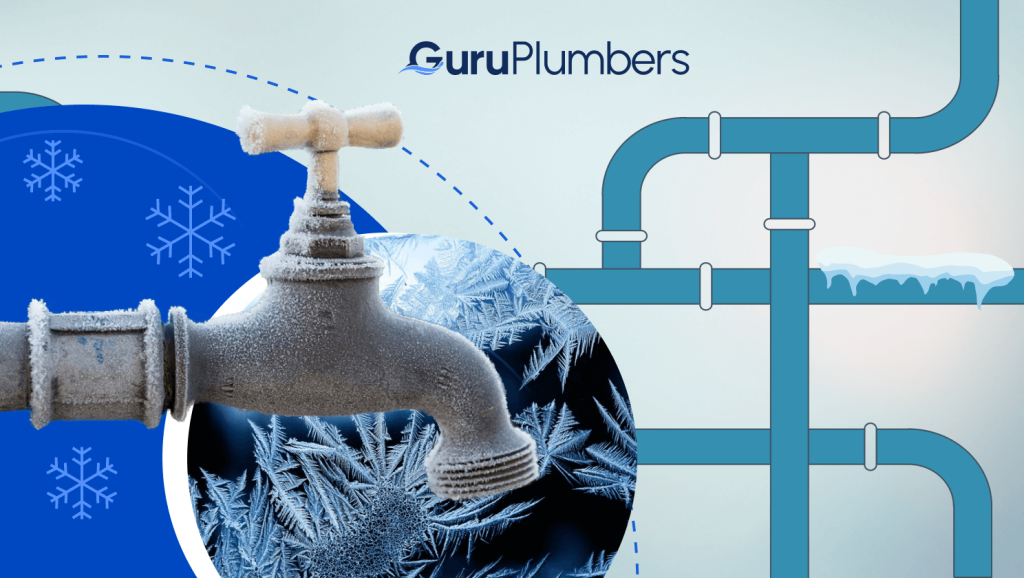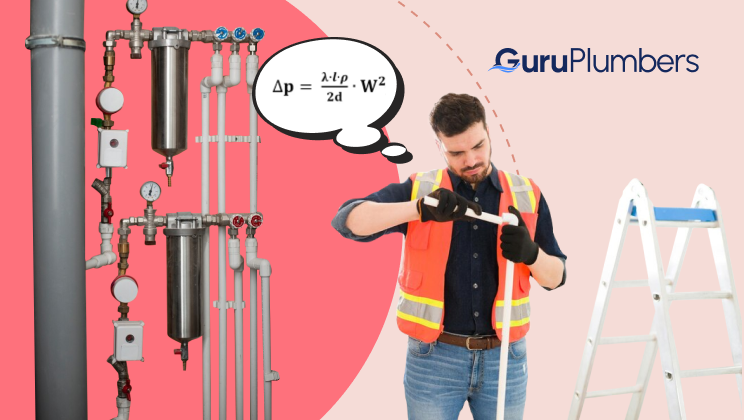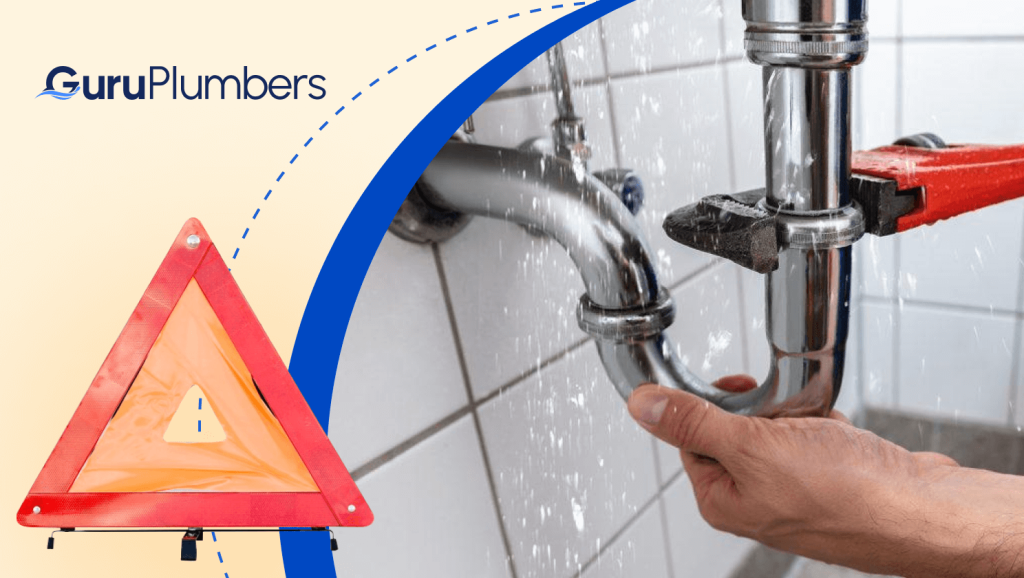Every winter, thousands of homeowners face extensive damage due to frozen pipes, with repair costs averaging $18,000 per incident. Winterizing plumbing prevents the headache and expense of burst pipes, ensuring your home stays safe and functional through the cold months. This post covers why pipes freeze, the risks involved, and practical steps to winterize both indoor and outdoor plumbing, along with emergency measures and long-term solutions.
Understanding the Risks of Frozen Pipes
Explanation: Pipes freeze when temperatures drop below 32°F, causing water inside to expand and create pressure that can lead to bursting.
Consequences: Burst pipes can flood your home, damaging walls, floors, and personal belongings, and lead to costly repairs averaging thousands of dollars.
Signs:
- Reduced water flow.
- Frost on exposed pipes.
- Strange smells from drains (indicating ice blocking the pipe).
Preparing Your Plumbing for Winter
Inspection: How to check for vulnerable areas
- Pipes in unheated areas (attics, basements, garages): Check for exposed pipes in these spaces. Ensure they are insulated and check for any cracks or leaks.
- Exterior pipes and faucets: Inspect all exterior faucets and pipes. Look for signs of wear or damage and ensure they are properly insulated.
Insulation: Types of pipe insulation and how to install it
- Foam pipe sleeves: Measure the diameter of your pipes, cut the foam sleeves to the necessary length, and wrap them around the pipes. Secure them with tape or wire ties.
- Heat tape or cables: Wrap heat tape or cables around pipes according to the manufacturer’s instructions. Plug them in to provide continuous warmth to prevent freezing.
Sealing Cracks and Openings: Methods for sealing gaps around pipes
- Caulking: Use caulk to seal small gaps and cracks around pipes where they enter walls and floors.
- Weather stripping: Apply weather stripping to doors and windows in unheated areas to prevent cold air from entering and cooling pipes.
Winterization Steps for Outdoor Plumbing
Drain and Disconnect: How to properly drain outdoor faucets and hoses
- Drain: Turn off the water supply to outdoor faucets. Open the faucet to drain any remaining water.
- Disconnect: Remove and store garden hoses to prevent water from freezing inside and causing damage.
Shut-off Valves: Importance of shutting off and draining water from outdoor spigots
- Locate the shut-off valve for outdoor spigots, usually found inside the home near the faucet location.
- Turn off the valve and open the outdoor spigot to allow any remaining water to drain out, preventing any water from being trapped and freezing.
Faucet Covers: How to use and install outdoor faucet covers
- Purchase insulated faucet covers from a hardware store.
- Place the cover over the outdoor faucet and secure it according to the manufacturer’s instructions. This adds an extra layer of protection against freezing temperatures.
Winterization Steps for Indoor Plumbing
Keep Heat On: The importance of maintaining indoor temperature
- Maintain: Keep your home’s thermostat set to at least 55°F, even when you’re away, to ensure indoor pipes remain warm enough to prevent freezing.
Open Cabinet Doors: Why and how to keep cabinets with pipes open
- Open: Leave cabinet doors under sinks and near appliances open to allow warm air to circulate around the pipes, especially in kitchens and bathrooms.
Trickle Water: How to let faucets drip to prevent freezing
- Trickle: During extremely cold weather, let faucets drip slightly. Moving water is less likely to freeze. This is particularly important for faucets on exterior walls.
Emergency Measures
Thawing Frozen Pipes: Safe methods to thaw pipes
- Using a hair dryer: Direct a hair dryer at the frozen section of the pipe, starting close to the faucet and working your way back. Keep the dryer moving to avoid overheating any area.
- Wrapping pipes with warm towels: Soak towels in warm water, wring them out, and wrap them around the frozen section of the pipe. Replace with freshly warmed towels as needed until the pipe thaws.
What Not to Do: Actions to avoid (e.g., using an open flame)
- Avoid: Never use an open flame or a blowtorch to thaw pipes. This can cause pipes to burst or even start a fire.
When to Call a Professional: Recognizing when professional help is needed
- Call: If you can’t locate the frozen section, the pipe is not accessible, or you are unable to thaw the pipe using safe methods, contact a professional plumber to prevent further damage.
Long-term Solutions
Pipe Relocation: Moving pipes to less vulnerable areas
- Relocate: Consider relocating pipes from unheated areas (like attics, basements, and exterior walls) to more insulated parts of your home to reduce the risk of freezing.
Smart Home Technology: Using smart thermostats and leak detectors
- Install: Use smart thermostats to maintain consistent indoor temperatures.
- Monitor: Install leak detectors that alert you to potential pipe bursts, allowing for quick action to minimize damage.
Regular Maintenance: Scheduling routine checks and maintenance
- Schedule: Arrange for annual inspections by a professional plumber to check for potential vulnerabilities and ensure all pipes and systems are in good condition.
Final Thoughts
- Understand the risks of frozen pipes and recognize signs of freezing.
- Inspect and insulate vulnerable areas.
- Drain and disconnect outdoor plumbing.
- Keep indoor temperatures stable and allow warm air to circulate around pipes.
- Use safe methods to thaw frozen pipes and know when to call a professional.
- Implement long-term solutions like pipe relocation, smart technology, and regular maintenance.
- Insulate pipes in unheated areas.
- Use faucet covers on outdoor spigots.
- Keep the heat on and let faucets drip in extreme cold.
Start winterizing your plumbing today to avoid costly damage, and share your winterization tips and experiences in the comments to help others prepare.
Frequently Asked Question
Signs of frozen pipes include reduced or no water flow from faucets, visible frost on exposed pipes, and unusual smells from drains due to blocked pipes. If you notice any of these signs, it’s crucial to take immediate action to thaw the pipes safely.
If a pipe bursts, immediately shut off the main water supply to prevent further flooding. Turn off the electricity if water is near electrical outlets or appliances. Call a professional plumber for repairs. Remove standing water to minimize damage and mold growth, and contact your insurance company to report the damage.
Yes, pipes located in unheated or poorly insulated areas such as attics, basements, garages, and exterior walls are more susceptible to freezing. Also, outdoor spigots and pipes in cabinets against exterior walls are at higher risk. Ensuring these areas are properly insulated and taking preventive measures can help protect your pipes.




